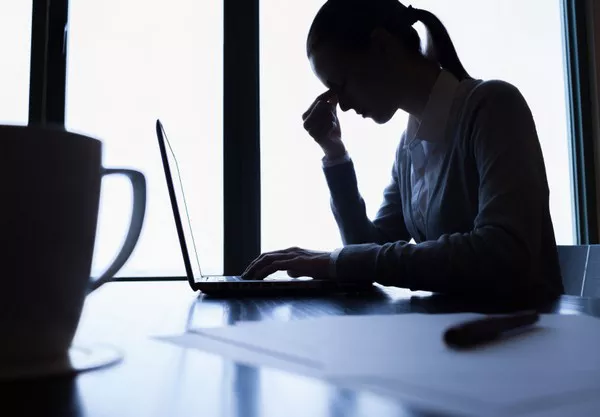Anxiety is a natural human response to stress or perceived threats. It can manifest as a fleeting sense of unease or a prolonged state of worry, impacting daily life. Whether you’re dealing with occasional anxiety or chronic anxiety disorders, learning how to calm down effectively is crucial for mental well-being. This article will explore various strategies, from immediate interventions to long-term practices, to help you manage and reduce anxiety.
Understanding Anxiety: What Is It?
Anxiety is a psychological and physiological state characterized by feelings of worry, nervousness, or fear. While it is a normal reaction to stress, persistent anxiety can interfere with daily activities and lead to more serious mental health issues, such as generalized anxiety disorder (GAD), panic disorder, or social anxiety disorder.
Anxiety often involves both physical and emotional symptoms. Physically, it can manifest as a racing heart, shortness of breath, sweating, or trembling. Emotionally, it might present as excessive worrying, restlessness, or a sense of impending doom. Understanding these symptoms is the first step in addressing them.
Immediate Techniques to Calm Down Anxiety
When anxiety strikes, it’s important to have tools at your disposal that can help you regain control quickly. Here are some effective techniques:
1. Deep Breathing Exercises
One of the most effective ways to calm down when anxious is to focus on your breathing. Anxiety often leads to rapid, shallow breathing, which can exacerbate feelings of panic. By consciously slowing your breath, you can signal your body to relax.
How to Do It: Sit or lie down in a comfortable position. Inhale slowly through your nose for a count of four, hold your breath for four counts, and then exhale slowly through your mouth for a count of four. Repeat this process several times until you feel more relaxed.
2. Grounding Techniques
Grounding techniques are designed to bring you back to the present moment, reducing the power of anxious thoughts that may be racing through your mind.
How to Do It: Engage your senses by focusing on what you can see, touch, hear, smell, and taste. For example, look around the room and name five things you can see, four things you can touch, three things you can hear, two things you can smell, and one thing you can taste. This simple exercise helps shift your focus away from anxiety and into the present.
3. Progressive Muscle Relaxation
Progressive muscle relaxation (PMR) is a technique that involves tensing and then relaxing each muscle group in your body. It helps to release physical tension, which can, in turn, reduce mental stress.
How to Do It: Start at your toes and work your way up to your head. Tense each muscle group for a few seconds, then slowly release the tension. Notice the difference in how your muscles feel when they are tense versus relaxed.
4. Visualization
Visualization, or guided imagery, involves picturing a calming scene or situation in your mind. This technique can be particularly useful for reducing anxiety by transporting your mind to a peaceful place.
How to Do It: Close your eyes and imagine yourself in a serene environment, such as a beach, forest, or mountain. Focus on the details—what you see, hear, and feel in this place. Spend a few minutes in this mental space, allowing your body to relax as you immerse yourself in the scene.
5. Mindful Breathing
Mindfulness involves focusing your attention on the present moment without judgment. Mindful breathing is a simple way to practice mindfulness and can be very effective in calming anxiety.
How to Do It: Pay attention to your breath as it moves in and out of your body. Notice the sensation of the air entering your nostrils, filling your lungs, and then leaving your body. If your mind starts to wander, gently bring your focus back to your breath.
See Also: How to Stop Worrying About Work on Your Days Off?
Long-Term Strategies for Managing Anxiety
While immediate techniques are helpful in the moment, long-term strategies are essential for managing anxiety over time. Incorporating these practices into your daily routine can lead to lasting improvements in your mental health.
1. Regular Physical Exercise
Exercise is one of the most effective ways to combat anxiety. Physical activity releases endorphins, which are natural mood lifters. It also helps to reduce levels of the body’s stress hormones, such as adrenaline and cortisol.
How to Do It: Aim for at least 30 minutes of moderate exercise, such as walking, jogging, swimming, or cycling, most days of the week. Yoga and other forms of mindful movement can also be particularly beneficial for managing anxiety.
2. Healthy Diet
What you eat can have a significant impact on your mood and anxiety levels. A diet rich in whole foods, including fruits, vegetables, lean proteins, and whole grains, can help stabilize your mood and energy levels.
How to Do It: Avoid excessive caffeine, sugar, and processed foods, as these can exacerbate anxiety symptoms. Instead, focus on consuming foods that are rich in omega-3 fatty acids, magnesium, and B vitamins, which are known to support brain health and reduce anxiety.
3. Adequate Sleep
Sleep and anxiety have a bidirectional relationship: anxiety can interfere with sleep, and lack of sleep can worsen anxiety. Establishing a healthy sleep routine is crucial for managing anxiety.
How to Do It: Aim for 7-9 hours of sleep per night. Establish a regular sleep schedule by going to bed and waking up at the same time each day, even on weekends. Create a relaxing bedtime routine, such as reading, taking a warm bath, or practicing relaxation exercises.
4. Mindfulness and Meditation
Regular mindfulness and meditation practices can help reduce anxiety by promoting relaxation and increasing your ability to focus on the present moment.
How to Do It: Start with just a few minutes of mindfulness meditation each day. Sit quietly, close your eyes, and focus on your breath or a mantra. As you become more comfortable with the practice, gradually increase the amount of time you spend meditating.
5. Cognitive Behavioral Therapy (CBT)
CBT is a widely used therapeutic approach for managing anxiety. It involves identifying and challenging negative thought patterns and replacing them with more positive, realistic ones.
How to Do It: If you’re struggling with chronic anxiety, consider working with a therapist trained in CBT. Through this therapy, you can learn to recognize and reframe the thoughts that contribute to your anxiety.
Lifestyle Adjustments for Anxiety Management
In addition to immediate and long-term strategies, making certain lifestyle adjustments can further help manage anxiety.
1. Limit Caffeine and Alcohol
Both caffeine and alcohol can exacerbate anxiety symptoms. While caffeine is a stimulant that can increase nervousness and jitteriness, alcohol is a depressant that can interfere with sleep and mood.
How to Do It: Try to reduce your caffeine intake by switching to decaffeinated coffee or herbal teas. Limit alcohol consumption, especially in the evenings, to improve your sleep quality and reduce anxiety.
2. Practice Time Management
Feeling overwhelmed by a lack of time can fuel anxiety. Effective time management can help you feel more in control and reduce stress.
How to Do It: Break down tasks into smaller, manageable steps, and prioritize them based on importance and deadlines. Use tools like planners, to-do lists, or digital apps to keep track of your responsibilities and manage your time effectively.
3. Build a Support Network
Having a strong support network can make a significant difference in how you cope with anxiety. Whether it’s friends, family, or a therapist, talking to someone you trust can help you feel less alone in your struggles.
How to Do It: Make an effort to stay connected with loved ones, even when you’re feeling anxious. Consider joining a support group for people with anxiety, where you can share your experiences and learn from others who understand what you’re going through.
Professional Help: When to Seek It
While many people can manage mild to moderate anxiety with self-help techniques, there are times when professional help is necessary. If your anxiety is severe, persistent, or interfering with your daily life, it’s important to seek support from a mental health professional.
Therapies for Anxiety
Cognitive Behavioral Therapy (CBT): CBT is the gold standard for treating anxiety disorders. It helps you identify and challenge the thought patterns that contribute to anxiety, teaching you healthier ways to think and react.
Exposure Therapy: This therapy involves gradually exposing yourself to the situations or objects that trigger your anxiety, helping you build confidence and reduce fear over time.
Medication: In some cases, medication may be prescribed to help manage anxiety. This can include antidepressants, anti-anxiety medications, or beta-blockers. It’s important to discuss the benefits and risks of medication with your healthcare provider.
Conclusion
Managing anxiety requires a multifaceted approach that combines immediate coping strategies with long-term lifestyle changes. While moments of acute anxiety can be distressing, employing techniques such as deep breathing, grounding exercises, and progressive muscle relaxation can help you regain control and reduce immediate symptoms. For long-term management, incorporating regular physical exercise, maintaining a healthy diet, ensuring adequate sleep, and practicing mindfulness and meditation can significantly improve your overall well-being.
Lifestyle adjustments, such as limiting caffeine and alcohol, managing your time effectively, and building a strong support network, also play crucial roles in managing anxiety. If your anxiety is severe, persistent, or significantly impacts your daily life, seeking professional help from a therapist or healthcare provider is essential. Cognitive Behavioral Therapy (CBT), exposure therapy, and, if necessary, medication, can offer substantial relief and support.
Remember, the journey to managing anxiety is personal and may require trying different strategies to find what works best for you. By implementing these techniques and seeking appropriate support, you can effectively navigate the challenges of anxiety and enhance your quality of life.
Related topics:



























